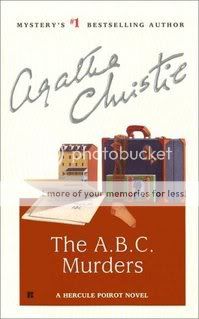Originally published in June 2005, on my original 52 Books blog.
A clever killer sends taunting letters to Hercule Poirot, telling him dates and the names of towns where he intends to strike. The towns and the victims are alphabetical, A in Andover, and so on. Poirot agrees with the police that they are dealing with a psychopath, but he can not but feel that there is something wrong about the letters, something that doesn’t fit the profile of the killer they have deduced from his methods and choice of victims. So begins a cat and mouse game, but who is which? Regular Christie fans will be in no doubt as to who is the cat and who is the mouse, but may be surprised at a deviation from the Christie formula. Whether it is real or a red herring, I leave up to the reader to find out.
I admit to not being a Poirot fan - he annoys me too much, and I need to take breaks between the books about him, but this is quite a good Christie story. It is perhaps unfortunate that I have read so many of them that immediately upon reading the back cover blurb I figured out certain facts about the main plot twist, and knew who the killer was as soon as he appeared.
Rating: Christie dishes out murder with her usual gusto, Poirot annoys the reader, Hastings blunders on as usual. 3+ stars.

Comments
This method of hiding one murder within other unrelated murders is now call an 'abc murder' - thanks to Dame Agatha.
I love Poirot, fell in love with him when I was a teenager and never fell out. What that says about me, I don't know, but as I always say: it takes all kinds. Ha!